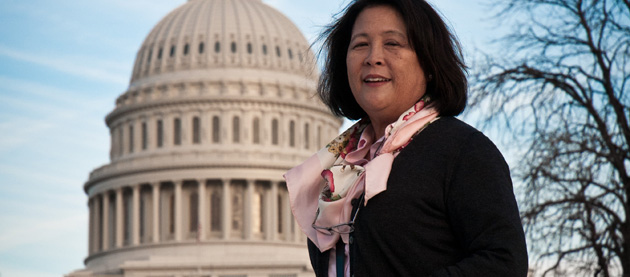Asian Model Minority Myth Debunked
Education professors research questions the unrealistic educational model toward Asian American students.

For 30 years, San Diego State University professor Valerie Ooka Pang wanted to show that the Asian “model minority” myth is a stereotype and a misconception. She and her colleagues, Peggy Han and Jenn Pang, have finally done it, and word is spreading to educators across the nation.
Recently published in the Educational Researcher, the primary journal for educational research in the nation, the six-year study examines the achievements of more than one million Asian American, Pacific Islander and white students on the California Achievement Test.
“This myth serves as an obstacle for Asian American and Pacific Islander students to get services from their teachers, schools, state and nation,” said Pang, a professor in SDSU's School of Teacher Education. “It’s something of great importance that needs to be examined.”
The ‘whiz kids’ myth
The term ‘model minority’ was first coined in 1966, referring to a New York Times article about Japanese Americans as ‘whiz kids’ or geeks who raise the grading curve. Since then, many educators view the achievements of Asian Americans and Pacific Islanders through this filter, making generalizations that apply to all Asian ethnicities, instead of looking at specific ethnic groups.
According to the ethnic minority viewpoint, Asian Americans and Pacific Islanders are victims of social bias, and so face recurring obstacles to equity, not only in the ability to access educational opportunities, but also in career advancement.
The study
Researchers analyzed the test scores of more than a million 7th graders on the reading and math sections of the California Achievement Test 6 from 2003-2008. The study examined the achievements of Asian Americans and Pacific Islanders as both a single aggregate and then, broken down into 13 specific ethnic groups. All analyses were then compared to the test scores of white students.
The results of the study refute the model minority myth. The evidence indicates that Asian American and Pacific Islander students are diverse in their achievement and demonstrate a range of academic performance. A continuum of performance was found among the specific 13 Asian American and Pacific Islander groups studied, and it was not sufficient to group them as one aggregate. In fact, the use of an aggregate results in over generalized perceptions of Asian Americans and Pacific Islanders that reinforce the model minority myth, Pang said.
Invisible needs brought to light
Upon completion of the study, Pang identified the impact the results can have on the future of education among Asian American and Pacific Islander students.
“The needs of many Asian American Pacific Islander kids are invisible,” Pang said. “Education is the best avenue for Asian Americans and Pacific Islanders in their goal to succeed in society, and this article finally provides data to show that Asian Americans and Pacific Islanders need services, like all the other kids.”
Pang says she derives great satisfaction from this study, particularly from the impact it may have on individual students.
“After reading our research, if there is just one teacher that will say, ‘maybe I should think about the needs of David or the needs of Jasmine a little more carefully,’ our purpose will have been achieved,” Pang said. “ I love being a teacher and researcher. I am very grateful for the opportunity to share our work with such a large audience.”
Funding for this research was provided by the SDSU President’s Leadership Fund and the Freeman Foundation.


